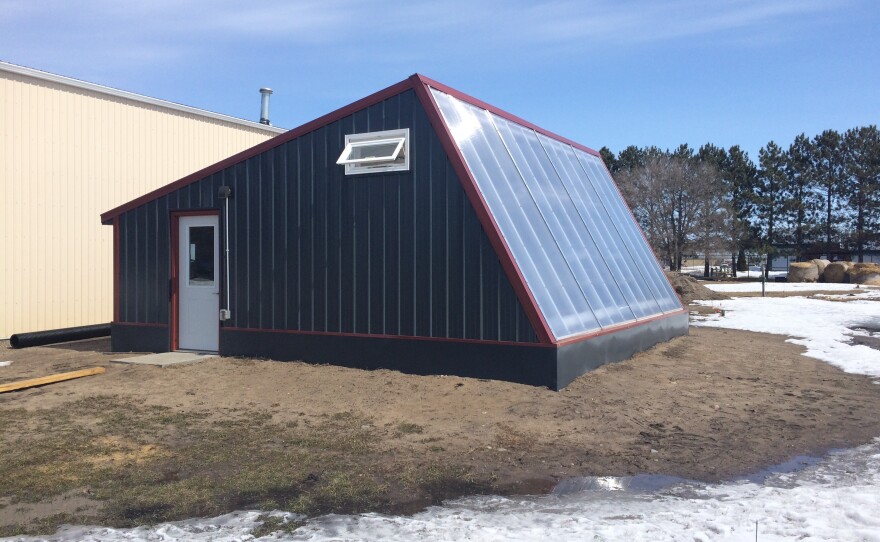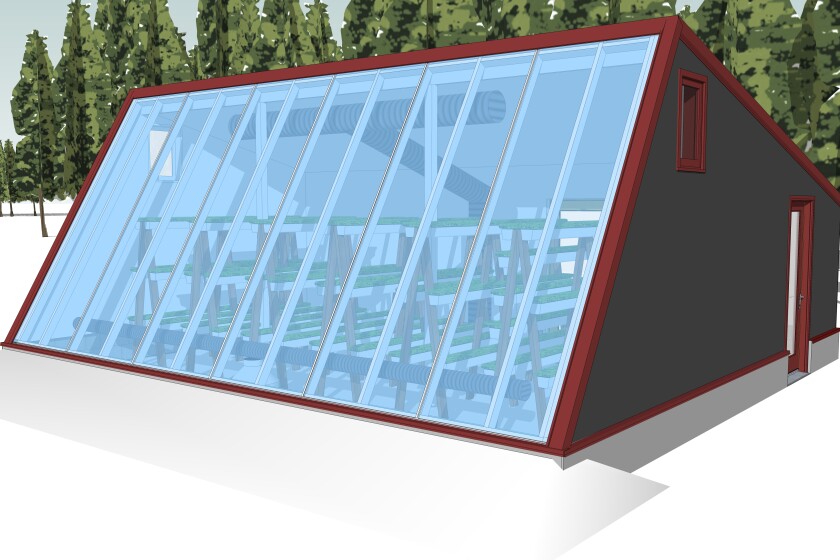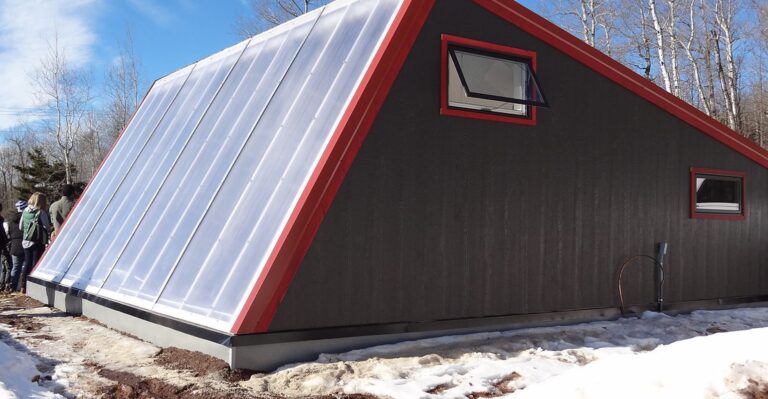A deep winter greenhouse’s cost varies significantly based on factors like size, materials, location, and design intricacy. These structures extend the growing season in cold climates using passive solar heating and thermal mass storage. Costs for a small to medium-sized greenhouse might range from a few thousand to tens of thousands of dollars. Variables such as high-quality materials, complex designs, labor, permits, and local regulations impact overall expenses.
Construction by a contractor or as a DIY project affects costs and completion time. Long-term operational expenses like heating and maintenance also need consideration.
What influences Deep Winter Greenhouse construction costs?

A combination of these factors, along with site-specific considerations, influences the total cost of constructing and operating a Deep Winter Greenhouse.
Construction Material
The choice of construction materials significantly impacts the cost of building a DWG. High-quality materials like polycarbonate for glazing, durable framing materials such as treated lumber or galvanized steel, and efficient insulation materials can increase initial costs but might offer better longevity and energy efficiency.
Additionally, the selection of foundation materials, such as concrete or gravel, and the type of flooring within the greenhouse can also affect the overall construction expenses.
Size and Design Complexity
The size and complexity of the DWG play a crucial role in determining costs. Larger greenhouses require more materials and labor, thereby increasing construction expenses.
Similarly, intricate designs, such as complex roof structures, multiple levels, or non-standard shapes, can elevate both material and labor costs due to the increased complexity of construction and installation.
Climate Considerations
The local climate greatly influences DWG costs. Building in harsher climates or areas with extreme temperature variations might require additional insulation, stronger materials, or specialized heating systems to maintain optimal growing conditions.
Incorporating climate-specific features like snow load considerations, wind resistance, or thermal mass for temperature regulation can impact costs significantly.
Technology and Equipment
The integration of technology and specialized equipment within a DWG contributes to both initial and operational expenses. Advanced heating systems, automated ventilation, irrigation systems, and lighting setups optimized for plant growth all add to the upfront cost.
However, investing in high-quality, energy-efficient technology can lead to long-term savings through reduced operational costs and better crop yields.
What are the main Deep Winter Greenhouse operational expenses?
Proper planning and allocation of resources for each component contribute to the overall efficiency and success of the deep winter greenhouse.
Initial Construction Costs
Materials
This includes the framing material, glazing, insulation, flooring, and any specialized materials required for the specific climate or design.
The cost of materials for the foundation, which could be concrete, gravel, or other suitable materials depending on the greenhouse’s requirements. Such as doors, windows, shelving, and other fixtures needed for functionality.
Labor
Cost for skilled workers involved in construction, including carpenters, electricians, plumbers, and other specialized professionals. General labor costs for tasks like excavation, lifting, and basic construction work.
Permits and Site Preparation
Fees associated with obtaining necessary building permits and complying with local regulations.
Costs for site clearing, leveling, excavation, drainage systems, and any necessary groundwork before construction begins.
Operational Expenses
Heating Systems
Cost of purchasing and installing heating systems such as radiant heating, geothermal systems, or other heating methods suitable for maintaining temperatures during winter.
Ongoing expenses related to fuel, electricity, or other energy sources required to run the heating system.
Lighting and Ventilation
Expenses for installing grow lights if necessary, especially in areas with limited sunlight during winter. Costs related to setting up and maintaining proper ventilation to regulate temperature and humidity inside the greenhouse.
Maintenance Costs
Regular checks, cleaning, and minor repairs to ensure the greenhouse’s proper functioning. Costs associated with servicing and repairing various equipment used within the greenhouse, including heating systems, lighting fixtures, and ventilation systems.
How to minimize expenses when constructing a Deep Winter Greenhouse?

Implementing these cost-saving strategies requires careful planning, consideration of individual circumstances, and a balance between upfront investments and long-term savings.
DIY vs. Professional Installation
DIY Approach
Undertaking the construction as a do-it-yourself (DIY) project can potentially save money on labor costs. Requires proficiency in construction, knowledge of greenhouse design, and access to necessary tools and equipment.
DIY projects may take longer to complete due to personal time constraints and learning curves. Possibility of errors or rework due to lack of professional expertise, potentially leading to additional costs.
Professional Installation
Professional builders bring specialized skills and experience, ensuring higher-quality construction and potentially faster completion.
Hiring professionals minimizes personal involvement, reducing stress and effort on the part of the greenhouse owner.
While professional services come at a higher upfront cost, they may result in fewer mistakes, thus avoiding potential extra expenses due to errors.
Energy-Efficient Technologies
Insulation and Climate Control
Investing in high-quality insulation materials for walls, roofs, and floors helps retain heat, reducing energy consumption.
Use of energy-efficient heating methods like geothermal heating, heat pumps, or solar-powered systems to reduce ongoing heating costs.
Implementing automated systems for ventilation and shading can optimize temperature and reduce energy usage.
Utilizing Local and Recycled Materials
Using locally sourced materials often reduces transportation costs and supports the local economy. Materials readily available in the area might be better suited to the climate, potentially reducing the need for specialized solutions.
Reducing transportation of materials decreases the carbon footprint associated with the construction process.
Recycled Materials
Reusing materials like reclaimed wood, glass, or metal lowers expenses compared to purchasing new materials.
Decreases waste and promotes sustainability by repurposing materials that might otherwise end up in landfills. Using recycled materials can add unique character and aesthetics to the greenhouse design.
FAQ’s
Do greenhouses work in winter?
Greenhouses can effectively work in winter by retaining heat, allowing for a controlled environment that protects plants from frost and cold temperatures.
How to build a greenhouse cheap?
Building a greenhouse inexpensively involves using cost-effective materials, considering a smaller size, opting for DIY construction, and exploring recycled or salvaged materials.
Are greenhouses cold at night?
Greenhouses can experience temperature drops at night, but the enclosed environment retains more warmth than the outside, helping to mitigate extreme cold.
Can I grow in a greenhouse all year?
Yes, with proper temperature and environmental control, a greenhouse enables year-round cultivation, allowing plants to thrive even during winter.
Do greenhouses need cooling?
Depending on the climate and environmental conditions, some greenhouses may require cooling mechanisms, like ventilation or shading, to prevent overheating during warmer periods.
Are greenhouses good for hot climates?
Greenhouses can still be beneficial in hot climates by regulating extreme temperatures, providing shade, and managing humidity levels for optimal plant growth.
Final Words
In conclusion, constructing and managing a Deep Winter Greenhouse (DWG) involves various factors that affect costs. From the materials used for building to ongoing operational expenses, each aspect plays a crucial role in determining the overall expenditure.
The initial construction costs encompass materials, labor, permits, and site preparation, while operational expenses include heating, lighting, ventilation, and ongoing maintenance. Strategies to save costs involve choosing between DIY and professional installation, incorporating energy-efficient technologies, and utilizing local or recycled materials.

